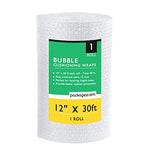You have no items in your shopping cart.
The Evolution of Trash Bags
Trash bags have become an indispensable part of our daily lives, simplifying the task of waste disposal. But have you ever wondered when trash bags were first invented? In this article, we'll delve into the fascinating history of trash bags, exploring their origins and the revolutionary impact they have had on waste management. From humble beginnings to their modern-day ubiquity, let's uncover the timeline of trash bags.
Trash Bags Before the Invention
Before the advent of trash bags, people relied on a variety of methods to dispose of their garbage. In ancient civilizations, clay pots were commonly used to collect waste, providing a rudimentary means of containment. As societies evolved, so did waste management techniques. From woven baskets to animal skin pouches, people continuously sought ways to contain and remove trash effectively.
The Birth of the Modern Trash Bag
1. The First Plastic Trash Bag
The invention of the modern trash bag can be attributed to the creative mind of a Canadian engineer, Harry Wasylyk. In the 1950s, Wasylyk, along with his colleague Larry Hansen, sought to develop a more efficient and hygienic waste disposal solution. They experimented with various materials until they stumbled upon low-density polyethylene (LDPE), a flexible and durable plastic.
2. The Innovation Spreads
Word of Wasylyk and Hansen's invention quickly spread, catching the attention of other manufacturers in the plastics industry. By the late 1960s, companies like Glad Products Company and Mobil Plastics (now ExxonMobil) began producing and marketing their versions of trash bags. These early trash bags were simple in design, providing a single-purpose solution for waste containment.
3. Advancements in Design
As the demand for trash bags grew, manufacturers recognized the need for innovation. They introduced various design enhancements, such as drawstrings, tie handles, and scented options, catering to the evolving preferences and convenience of consumers. These improvements not only made trash bags more user-friendly but also helped to reduce odors and prevent leakage.
FAQs about the Invention of Trash Bags
-
Q: Who invented trash bags?
- A: Trash bags were invented by Canadian engineer Harry Wasylyk, along with his colleague Larry Hansen.
-
Q: When were trash bags first introduced?
- A: Trash bags first entered the market in the late 1960s.
-
Q: What material are trash bags made of?
- A: Most trash bags are made of low-density polyethylene (LDPE), a flexible and durable plastic.
-
Q: Were there any design improvements to trash bags over time?
- A: Yes, over time, manufacturers introduced design enhancements such as drawstrings, tie handles, and scented options.
-
Q: What companies were involved in producing early trash bags?
- A: Glad Products Company and Mobil Plastics (now ExxonMobil) were among the early producers of trash bags.
-
Q: How did trash bags impact waste management?
- A: Trash bags revolutionized waste management by providing a more efficient and hygienic means of waste disposal.
Conclusion
From their humble beginnings as clay pots and woven baskets, trash bags have come a long way. Thanks to the ingenuity of inventors like Harry Wasylyk and Larry Hansen, waste disposal has become a more convenient and hygienic process. The invention of trash bags has not only transformed our everyday lives but also played a vital role in the advancement of waste management practices worldwide.
Next time you tie up a trash bag and take it to the curb, take a moment to appreciate the journey it has undertaken. From the first plastic trash bag to the myriad options available today, these simple yet essential items have certainly made our lives cleaner and more organized.








